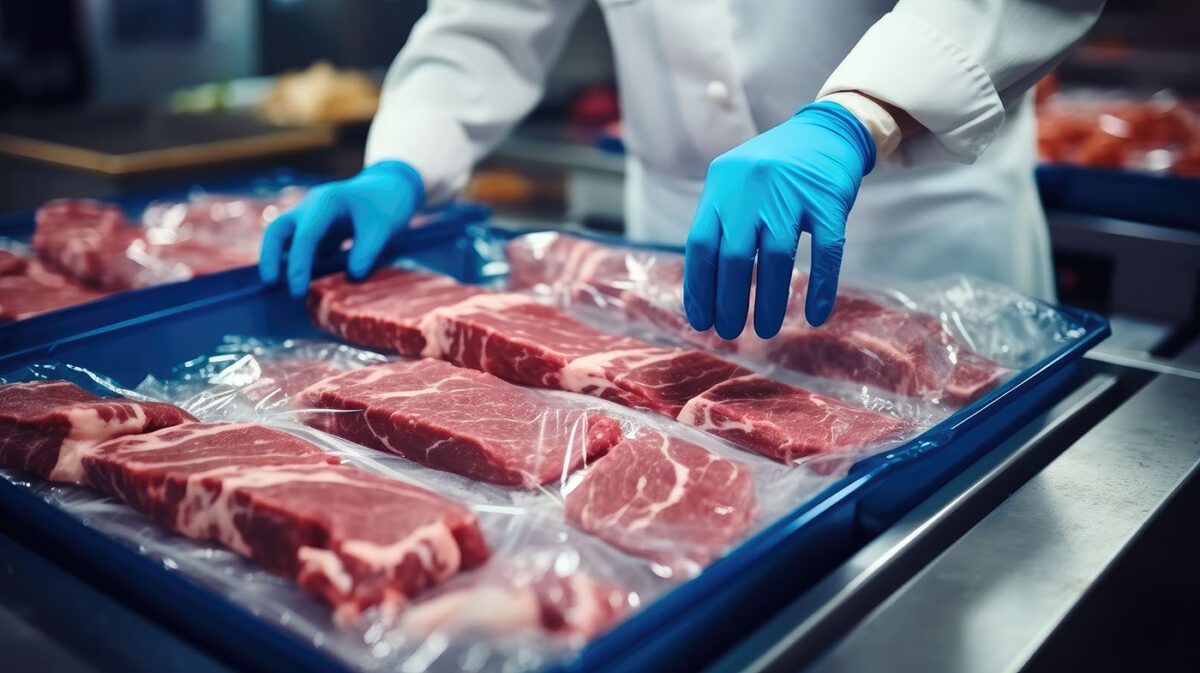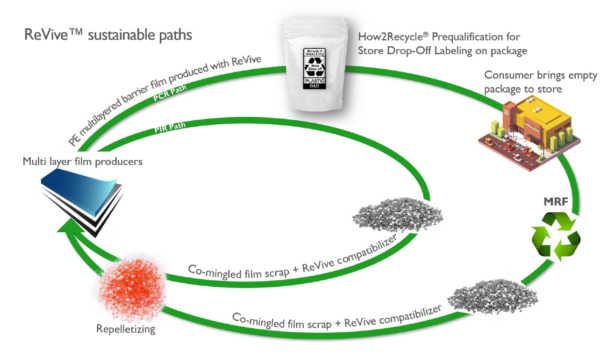Additives for PE-Nylon Film Recycling Compatibility

The Association of Plastic Recyclers (APR) has established guidelines and certification programs aimed at assisting producers in making their PE film recycling-compatible.
Given the stringent compliance requirements of the food industry regarding sanitation and safety, progress in the recyclability of materials and the use of Post Consumer Recycled (PCR) content for food contact has been cautious. Yet, given the significant impact of food packaging on plastic pollution, this sector must evolve towards a circular economy model.
Challenges and Solutions in PE Film Recycling
According to the APR, mono-material flexible packaging is the preferred solution for enhancing recyclability. However, the need for high-oxygen barrier properties in certain applications necessitates the use of additional materials such as Nylon and EVOH, which complicates the recycling process. Films incorporating these materials, or those with less than 90% PE content, adversely affect the recycling stream, as do contaminants like PET, PVC, PVDC, and biodegradable plastics, which can introduce defects into recycled PE film.
Navigating Recyclability with Nylon
Addressing the recyclability dilemma, the APR advises brand owners and producers to integrate specific additives, such as compatibilizers and agents for moisture and odor control, into their production processes. These measures are designed to ensure that the packaging does not hinder the recycling process but rather enhances compatibility with other post-consumer materials. Also, this contributes to obtaining high-quality recycled plastic. In this way, certifications from the APR can affirm the recyclability of packaging within the PE stream.
Advancements in Specifically Formulated Films
Innovative solutions are emerging, such as Dow Packaging’s certification of its sealing layer for PE film packaging, which includes up to 20% SURLYN ionomers. Similarly, Sholle IPN has received certification for its PE-based bag-in-box packaging that contains 3% EVOH, and Amcor has certified its PE film with Nylon and EVOH. These certifications pave the way for recycling facilities to accept and process a broader range of PE film materials, which have traditionally been rejected due to uncertain composition or the inclusion of problematic substances like Nylon and PVOH.
Additive companies like AMPACET, also offer these additives that comply with How2Recycle Prequalification for Store Drop-Off Labeling and has a Critical Guidance Recognition from the Association of Plastic Recyclers. This additive allows the following polymers to be included in a PE recycling stream:
- EVOH up to and including 20%.
- PA6 (nylon) up to and including 15%.
- PA6 (nylon) and EVOH up to including 10% and 5% respectively.
It is used in multi-layer food packaging and stand-up pouches, which are trending in the packaging industry.

Additive for PE film with Nylon and EVOH recycling. Courtesy of AMPACET.
The journey towards fully recyclable PE film packaging is marked by both challenges and innovative solutions. The efforts of the Association of Plastic Recyclers, alongside advancements from companies, illustrate a forward-moving trajectory in tackling the complexities of PE film recycling. Navigating the balance between functionality and recyclability highlights the need for certifications and tailored formulations in the industry. These initiatives boost recycling efficiency and are crucial for shifting towards a sustainable circular economy. All stakeholders, from producers to consumers, must embrace recyclability-focused practices to improve PE film packaging management.

Additives for PE-Nylon Film Recycling Compatibility
1 to 1.5% titanate additive can ci-polymerize PE-Nylon (An Addition Polymer and a Condensation Polymer) in the recycle extruder melt.
See links:
https://4kenrich.com/wp-content/uploads/2019/02/Ti-AND-Zr-CATALYSTS-IN-THE-MACROMOLECULAR-MELT-REGENERATE-UNFILLED-AND-FILLED-VIRGIN-REGRIND-AND-RECYCLED-PLASTICS-S.J.-Monte-Catalysis-Session-SPE-Polyolefins-2019.pdf .
https://4kenrich.com/wp-content/uploads/2022/12/KPI-Extrusion2022-Presentation.pdf
Salvatore J. Monte, P.E., B.C.E, MS-Polymeric Materials, SPE Fellow & HSM, Plastics Hall of Fame
President
Kenrich Petrochemicals, Inc.
PO Box 32
Bayonne, NJ 07002 USA
Tel No. 201-823-9000
[email protected]
http://www.4kenrich.com